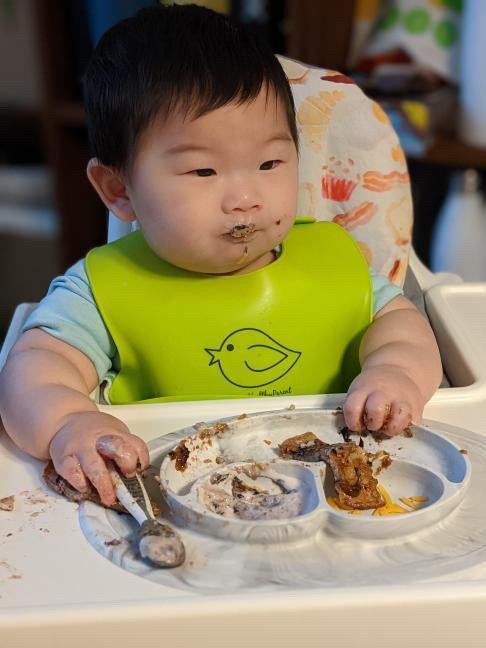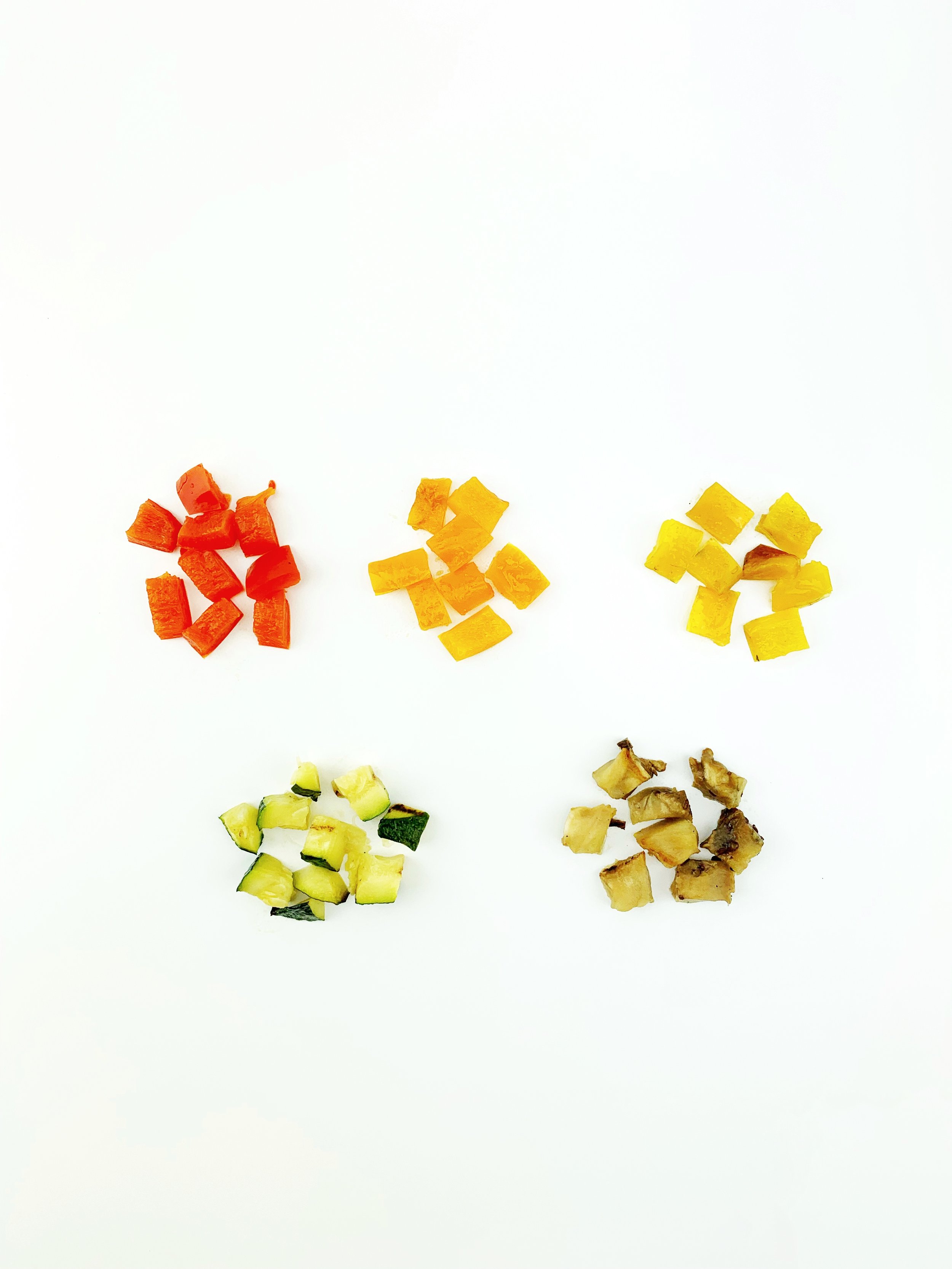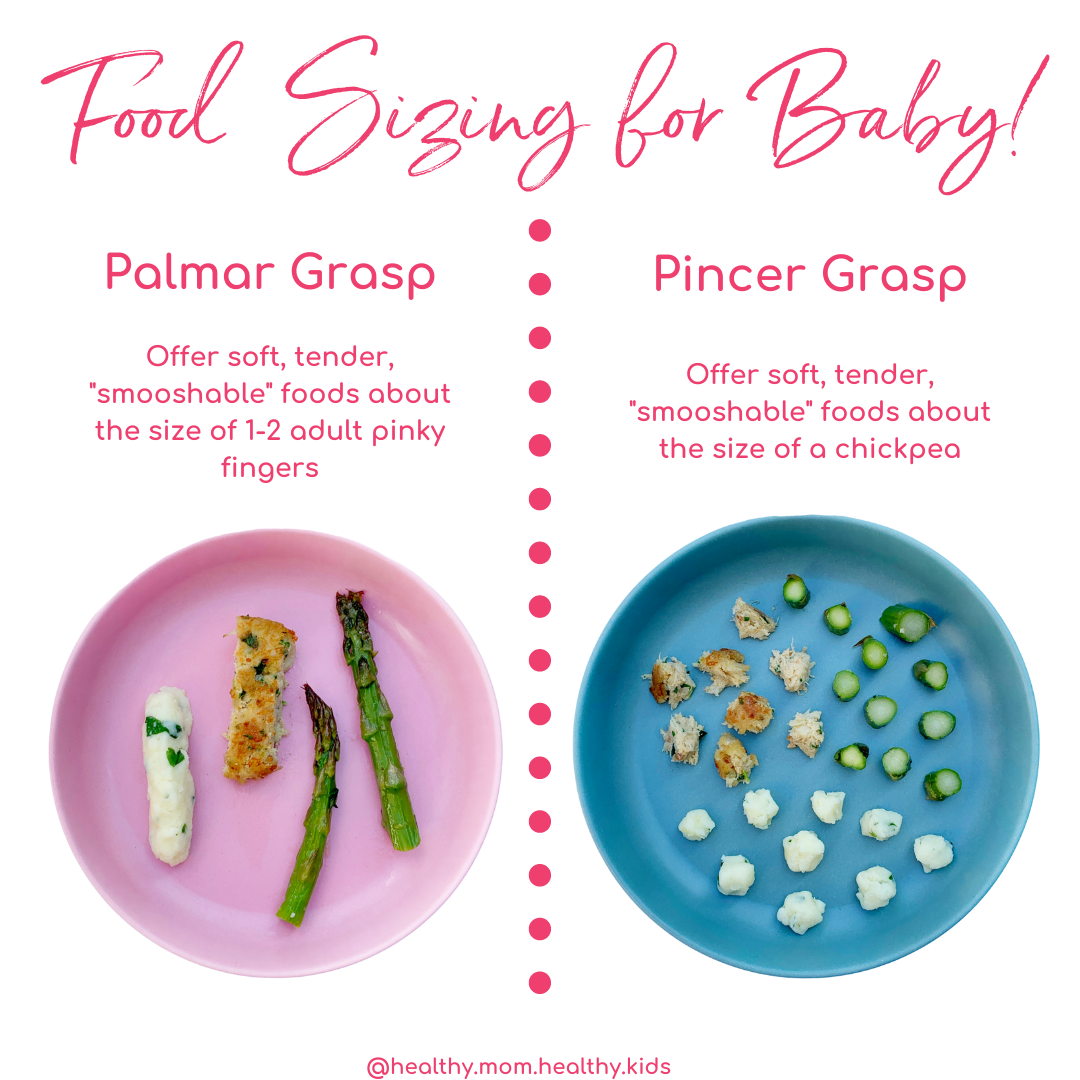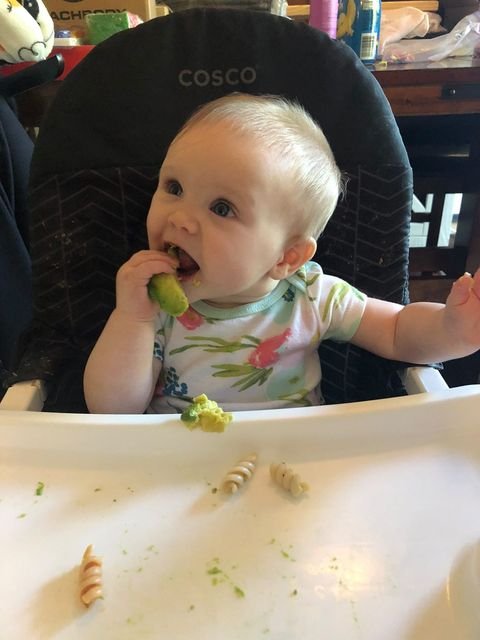Beginner’s Guide: How to Start Baby-Led Weaning
This blog contains affiliate links, meaning that if you choose to purchase a product through a link, I will receive a small commission - but this in no way impacts the amount you pay. Affiliate links are marked with an asterisk (*)
What did babies eat before commercial baby food became available in the early 20th century? Before the 1920s, foods weren't made just for babies. Instead, parents gave their little ones soft table foods that were safe to chew and swallow.
That being said, 100 years ago, babies didn’t start solids until about 12 months old—six months later than they typically do today. Thanks to new research, we know more now about a baby’s developmental readiness to start solid food, and that most babies are developmentally ready to start solids at about 6 months old (sometimes a little earlier).
We've also learned that the feeding experience offers benefits for babies, such as the consumption of key nutrients like iron and zinc. Taste preferences and healthy eating habits take root during infancy, and helping babies have a positive introduction to solid foods sets the stage for a healthy relationship with food and feeding as babies grow.
As opposed to traditional weaning via pureed foods fed by spoon, baby-led weaning (BLW) is a way to start a baby on solid foods, whereby solids are introduced via finger foods from the family table for self-feeding, starting at about 6 months of age when signs of developmental readiness for solid foods are present.
This beginner's guide will walk you through the essentials of baby-led weaning and a BLW approach, including everything from selecting baby foods to understanding safety measures. Keep reading to learn more from a baby feeding expert about baby-led weaning and how to get started.
What Is Baby-Led Weaning?
BLW is a baby feeding method that encourages babies to feed themselves when they’re ready to start solids. Instead of the passive spoon-feeding of store-bought or homemade puréed foods, BLW allows the baby to explore the tastes, textures and smells of the foods they'll be eating more of once they're weaned.
Many early foods must be modified in order to be safe for 6 to 12-month-olds to mash down with gums and swallow. However, serving modified food from the family table is easy for parents once they know what to serve and how to safely prepare it for babies. Plus, the baby benefits from eating with the family, and caregivers save money and time by preparing one meal for everyone.
So, you may be wondering, “How do you know when and how much to feed your little one?” Responsive feeding is a key component of BLW, and parents can start when their little one is still formula or breastfeeding. In a responsive feeding (or “baby-led”) relationship, caregivers watch for the baby's hunger and fullness signals and respond by offering food or ending the feeding. The baby decides how much and whether to eat.
As a parent and pediatric dietitian, I encourage parents to consider BLW as a way of starting solids, and no matter what feeding model you choose to use, always follow a responsive feeding model. Let’s dive into more details about BLW!
What Are the Benefits of Baby-Led Weaning?
Meals may be a little messier during baby-led weaning, but BLW is a flexible and empowering approach to introducing solid foods that offers many potential benefits for both parents and baby, including:
Improved motor skills through self-feeding and independence – BLW allows babies to feed themselves, which supports motor skill development and a positive relationship with food. Parents provide the food and determine when and where babies eat, while the baby gets to decide whether and how much to eat.
Increases the variety of flavors, colors, and textures – Taste preferences develop over time, with repeated exposures. Keep offering new foods so your little one is exposed to how different textures feel in their hands and mouth. Picky eating is often related to color or texture aversion to new food. The more variety a baby experiences when starting solids, the more likely they are to accept a variety of foods and flavors down the road.
Encourages healthy eating and family meal time – Parents spend less time, money, and energy preparing separate meals or making purees. Right from the start, your baby is drawn into family meals and benefits from watching caregivers eat, which helps teach them how to self-feed. Introducing a variety of foods early on can promote healthier eating habits and help prevent picky eating later on.
When and How to Start Baby-Led Weaning
Once babies are about 6 months old and showing the signs of readiness for solids, they can begin baby-led feeding. Here are the common signs that a baby is ready to start solids:
Sits up independently (with minimal support)
Good head and neck control
Notices food, reaches for it, shows an interest, and opens mouth when food is offered
Can bring their hand or objects to their mouth
When your baby is ready to begin baby-led weaning, start small and go slow! Below I have listed a few of my top tips for how to start baby-led weaning:
Use a high chair
Secure the baby in a high chair for feedings to limit movement so that they can focus on chewing and swallowing. This lowers the risk of choking and frees a baby’s attention and hands to explore the flavor and feel of new foods.
Using a high chair and utensils* when your baby is ready also makes mealtime easier for you and your baby. Look for age-appropriate baby items like silicone spoons with short, wide handles and bowls with suction cups* on the bottom, which will mean less of a mess to clean up off the floor and less frustration for babies!
2. Start small
Tiny tummies only need a little food at a time. So start with about 1 tablespoon of each food at meals and increase as your baby develops or shows signs of hunger.
If you’re unsure how much a baby should eat, you can learn to identify your little one's hunger and fullness signals. Most healthy babies can regulate their appetite and communicate when they are full. For example, they may lose interest in food, throw their food, turn away, or shake their heads when done.
Try not to stress about the amount of food they eat! Between 6 and 12 months old, babies still get most of their nourishment from breast milk or formula. So do your best to have fun with complementary feeding and allow them to go at their own pace. It's okay if they refuse certain foods!
3. Feed responsively, but work toward a feeding schedule
Some parents find baby feeding schedules and routines helpful. Don't worry if your baby's sleep and hunger don't fit this schedule or if your little one doesn't show interest in food at every meal. Every baby is different. And keep in mind that schedules change as babies start taking in more calories and nutrients from solids and naturally begin to drop a milk feed here and there.
A 6 month-old little fellow getting messy at mealtime! Thank you to his parents for allowing me to share their photo!
Baby-Led Weaning for Beginners
Depending on their age, certain types of foods are ideal for BLW without much modification. Once a baby’s motor skills develop and they have a mouthful of teeth, they can eat a greater variety of foods.
Palmar Grasp (6 to 9 Months Old)
Six to 9 month-olds typically grasp objects by wrapping their palm and fingers around an object and “palming it.” They haven't developed the dexterity and fine motor skills yet to pick up small pieces of food with the tips of their fingers and find their mouth. Offering small bites of food can be frustrating at this stage.
Offer soft, tender, and mashable foods about 2.5 to 5 inches long – approximately the size of 1 to 2 adult pinky fingers. This allows babies to eat the part of the finger-shaped food that sticks out of their palm as they grasp it.
Some of the best BLW first foods that are soft and smooshable include banana, mango, or avocado, tofu, cooked vegetables like sweet potatoes and butternut squash, pieces of toast with a thin layer of peanut butter, and scrambled eggs.
Pincer Grasp (9 to 12 Months Old)
Most babies at this stage can pick up small objects between their pointer and thumb and bring them to their mouth (although keep in mind every baby develops at their own rate!) The pincer grasp usually develops at around 9 to 12 months old. At this stage, age-appropriate foods include those that are soft, tender, mashable, and cut into chickpea-sized pieces.
Finger foods such as chicken, peas, plain Cheerios, beans, chopped and peeled cooked vegetables and fruits (like pear or strawberries), and tender-cooked pasta are great options.
**If your baby is almost ready to start solids and you’re looking for someone you trust to map out the entire process of food allergy prevention and allergen introduction for you, check out my new book, Safe and Simple Food Allergy Prevention: A Guide to Starting Solids and Introducing Allergens with 80 Family-Friendly Recipes! It comes with a complete plan for allergen introduction + 8 weeks of allergen introduction meal plans, an up-to-date guide on baby-led feeding, and more.**
Baby-Led Weaning Schedule
Starting baby-led weaning (BLW) is an exciting milestone! When starting baby-led weaning, consistency and flexibility are crucial. Every baby is different, so adjust this schedule as needed based on your baby’s pace and preferences.
~ 6 Months:
Baby-led weaning first week: the Introduction Phase: the best foods for baby to start with are soft-cooked vegetables (like sweet potatoes or carrots) that are cut into manageable pieces about the size of 1-2 adult-sized pinky fingers
Don’t expect your baby to actually ingest much! Squishing, licking, and dropping are common ways that babies may explore food at first, and this exploration is valuable even if they don’t actually eat
Offer foods about an hour before or 1-2 hours after a regular milk feed
Frequency: Aim for one solid food meal a day, allowing your baby to explore and taste; the focus is on letting them learn about textures and flavors
~ 7 months:
Two Meals a Day: Gradually introduce a second meal, such as breakfast or dinner. Continue to offer a variety of foods, including fruits, vegetables, and iron-rich foods like well-cooked beans, eggs, or minced soft-cooked meat
Balanced Offerings: Ensure meals are balanced with a mix of carbohydrates, proteins, and fats
~ 8-9 months:
Three Meals a Day: Around 8-9 months of age, aim to offer three meals a day, including a variety of foods
Let your baby decide their food intake, and continue offering milk feeds as usual
Is Baby-Led Weaning Safe?
It’s understandable that fear of choking and food allergies are top parental concerns when a baby starts eating solid food. In fact, I’m often told by families in my private practice that fear of choking is the most significant barrier preventing them from starting their babies on solid foods using a baby-led weaning approach.
For some parents, spoon-feeding purees feels safer at first. It’s true that we do give up some control over how big a bite our little one takes when we allow the baby more independence at meals.
However, studies show that BLW does not increase the risk of choking when developmentally appropriate-sized and textured foods are offered. In fact, this study found that babies who were offered finger foods the least often had the highest frequency of choking episodes.
Still, choking is always a concern when serving a baby solid food. Parents can reduce the risk of choking by serving soft, finger-shaped foods for babies using a palmar grasp or soft foods cut into tiny bite-sized pieces for babies using a pincer grasp.
Avoid the most common choking hazards until later into toddlerhood or even beyond, when a child has the chewing skills and molars to handle them.
Additionally, babies should always be secured in a high chair and supervised closely during meals. Allow babies the space to feed themselves and learn about the differences between gagging and choking and what to do if the baby pockets food in the cheeks or stuffs too much food in their mouth.
A few examples of the top choking hazard foods to avoid include:
Whole nuts, grapes, cherry tomatoes
Raw vegetables
Whole large seeds or seed kernels
Whole or large circular sections of hot dogs, sausages, and meat sticks
Hard or sticky candies (including jelly beans, gummy bears, and marshmallows)
Chunks of seed or nut butters (it's okay to thinly spread peanut butter on a cracker or bread)
Large pieces of cheese and raw, hard fruit (especially apples)
Raw leafy greens
Citrus fruit membranes
Whole corn kernels (even if cooked)
Popcorn
Introduce Common Food Allergens Early and Often
Until recently, the American Academy of Pediatrics recommended that children avoid allergenic foods for the first few years of life. However, according to the AAP’s 2019 review, the latest research shows that early introduction of common food allergens such as peanuts and eggs may prevent food allergies.
The nine top food allergens responsible for over 90% of all food allergies are:
eggs
cow’s milk
wheat
peanuts
tree nuts
soy
fish
shellfish
sesame seeds
The AAP recommends introducing allergenic foods once you begin feeding your baby complementary foods. However, if your baby is at high risk for food allergies, consult your baby's pediatrician first.
It is best to introduce top allergens for the first time alone or with foods the baby has had and tolerated before. Choose a day to start when the baby is healthy and happy, and you’re able to monitor for an allergic reaction for a few hours after the meal.
Offer a tiny taste to start, wait 10 minutes, and if there is no reaction, offer the rest of the portion of food. The next day or so, if there has been no reaction, continue the same steps with the next allergen until you’ve introduced all nine.
Once introduced and tolerated, keep these common allergens in your baby’s diet about twice per week to help prevent food allergies from developing.
Baby-Led Weaning Tips
Remember, when you give your baby autonomy over how much they eat, it strengthens their internal self-regulation system, and they learn to eat according to their hunger. Here are a few top tips for baby-led weaning:
The key is to encourage exploration and learning while ensuring they get the nutrients they need
Try to include your baby in family meals as much as possible – babies learn to eat by watching and mimicking
Soft fruits and cooked vegetables like avocados, bananas, and sweet potatoes that can be easily mashed work well as early foods
Hard fruits and vegetables with tough skins should be peeled and cooked until they’re soft and mashable
Modify foods appropriately to match your baby’s stage of development and offer soft pieces of food in shapes that are easy for the baby to self-feed
Always supervise mealtime, keep baby upright in a high chair, and keep an eye on your baby as they chew and swallow
Avoid food options that are choking hazards unless they're grated or cooked until very soft, so they're easy to swallow
Avoid added sugars and be mindful of sodium content in the foods you offer your baby, avoiding overly salty and heavily processed foods
Thoroughly wash all fruits and vegetables – defrosted frozen fruits and frozen veggies (cooked) work well
Offer a small amount of water in an open cup or straw cup with meals only
In addition to my new book, Safe and Simple Food Allergy Prevention: A Guide to Starting Solids and Introducing Allergens with 80 Family-Friendly Recipes, you may also want to download my FREE Baby-Led Feeding Starter Guide to get the basics of baby-led weaning, as well as a budget-friendly list of the few essentials you need to get started.
If you are still searching for more, check out my online BLW course for parents, which is a series of short videos that walk you through the whole process of starting solids using a baby-led approach. Happy feeding!
A 7 month-old baby girl enjoying avocado slices! Big thanks to her parents for sharing.















Learn from a pediatric RD if powdered infant formula is safe for your baby in this deep dive into infant botulism, its symptoms, and prevention strategies.